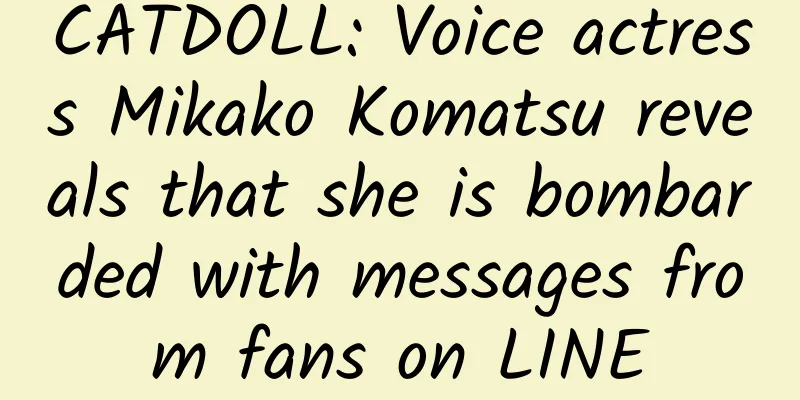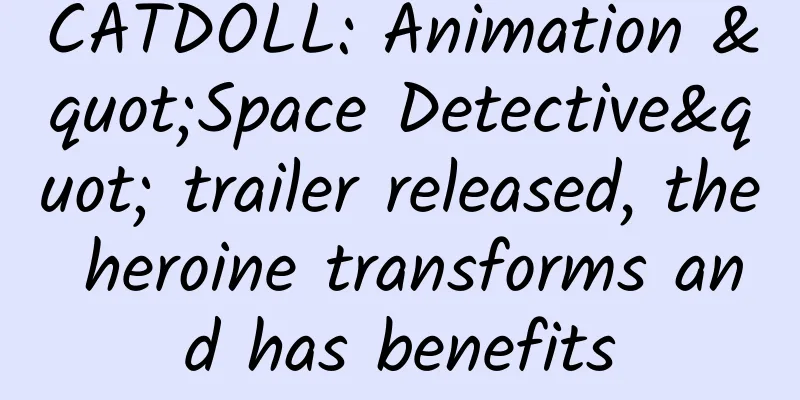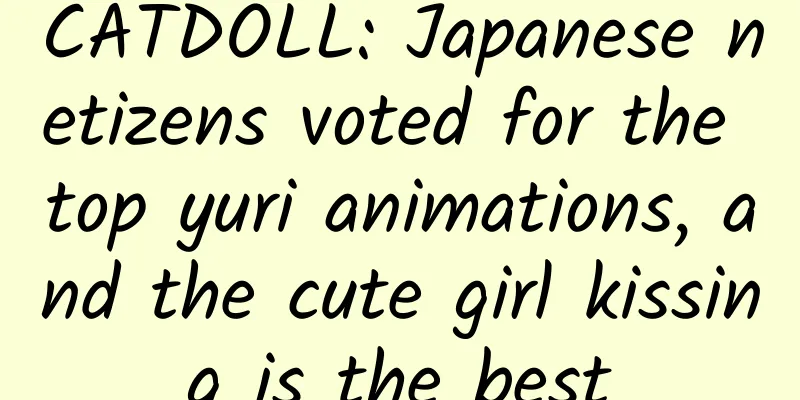CATDOLL: A comparison of old and new domestic animations: when will they regain their former glory?

|
Although American animations have different themes and characters, their main themes have not changed at all. The key words can be summarized as: friendship, family, awakening, bravery, justice, and saving the world. In recent years, American animations have invaded the big screen in an endless stream, which makes the situation of domestic animations even more bleak, and makes people miss the classics in the old domestic animations. Old domestic cartoons: The aftertaste is intriguing The DreamWorks animated film "Crazy Alien" that is currently showing in theaters has all the keywords mentioned above. The finale is of course to fill the universe with love. DreamWorks' "dream-making" technique has been well known to the audience, and it has always been on par with American animation giants such as Disney and Pixar in terms of creating cartoon characters. This time, the protagonist "Popo Starman" will go down in history with two horns on his head and a fat octopus-like appearance. Cartoons are not just for children, adults also have a childlike heart. Every time after watching a wonderful Hollywood cartoon in the cinema and walking out of the dark corridor, what I sigh for is not the touching plot in the cartoon, but the old domestic cartoons that I can't forget as a late 80s or "pan-90s". The 1980s and 1990s were milestones for domestic cartoons. The Shanghai Film Studio alone had a trend of dominating the world animation film industry. The richness of themes and techniques made the audiences of all ages at that time dazzled. The ink-and-wash style "The Tadpole Looking for His Mother"; "Nezha Conquers the Dragon King" and "The Book of Heaven" are based on folk stories and the shapes are inspired by classical New Year paintings and opera images; paper-cut animations "King Kong Calabash Brothers" and "Ginseng Doll"; "The Story of Avanti" and "The Great Thief" are puppet films; any one of them can be presented at an international film festival. Especially for traditional themes like "Nezha Conquers the Dragon King" and "The Book of Heaven", the large-scale use of Chinese painting materials, the gray Chinese painting of the large background and the beautiful patterns and saturated colors of the characters form a harmonious contrast. Every element of the picture, including pavilions, towers, mountain streams, etc., are very national in nature, highlighting the unique cultural atmosphere of China. The three-dimensional colorful figures in Hollywood are like those produced from the same mold, but the pictures in the old domestic cartoons are never boring. And the use of the lens is relatively simple, basically using a fixed camera movement method, highlighting the introduction of the scene, and keeping the camera in a stable state. Just like other traditional Chinese art forms such as drama and folk art, all the images are in one situation, and the connotation is often profound, or playful and alert, just like Afanti dealing with Master Bayi, always so calm and composed, born with a stubborn temper. The more intriguing the aftertaste of old domestic cartoons is, the more miserable the current situation of domestic cartoons is. Not to mention that children have been watching "Pleasant Goat and Big Big Wolf" from the age of 3 to 13, those "Big Ear Tutu", "Pig Man" and "Boonie Bears" are rough pictures, "borrowed" storylines, vulgar aesthetic tastes, and even vulgar social values that are revealed from time to time, which are unbearable to watch. And when children watch such cartoons, it also makes people feel gloomy. New domestic animation: No high ground to build on Last month, former Shanghai Animation Film Studio director and animator Ma Kexuan died of lung cancer at the age of 76. Mr. Ma was called "the last master of ink-and-wash animation" by the industry. His death made people recall the glorious history of domestic animation. It turns out that we once had a phoenix coming. Isn't the birth of "The Book of Heaven" inseparable from the episode of Hollywood animation producers coming to China to learn from it? The nostalgia for the old times has not yet set off a wave, but a domestic animation exhibition held in Beijing not long ago has already spoiled the scenery. The severely distorted "Huluwa" model is as abrupt and awkward as the spoof of actor Wang Zulan. It has not absorbed a single detail of the old animation, but has willfully "spoiled" the classic. There are many different opinions on why the production level of domestic animation has plummeted since the 1990s. The collapse of the past production model is certainly an important reason, but what is more easily overlooked is indeed the soul of animation production, that is, emotion. Compared with other visual arts such as movies or TV series, the embarrassment of animation is similar to that of crosstalk in the folk art world. The supporting conditions are very limited, and there is no "cast" (star lineup) popular in the film and television industry to escort. Animation emphasizes "taking objects from the air and painting pots on the spot", so the aesthetic taste of directors and screenwriters is particularly important. If you are not a person with childlike interest and thoughts, no matter how strong your painting skills or production technology are, it is "beautiful but soulless". What's more, on the technical level, domestic animation is also in an awkward state of "limited inheritance of tradition and insufficient learning of unique skills". Old-generation domestic cartoon producers like Mr. Ma Xuan often have extremely high humanistic qualities and are well-versed in traditional folk stories, ancient classics, and even traditional art techniques, so they write with great spirit. There is only one reason why an artwork can reach a broad state, and that is that the artist who created it is also an open-minded person. Take "The Book of Heaven" as an example. At the end of the story, in the scene where Dan Sheng fights with the fox spirit, the image design of the dragon and the tiger uses the image of Chinese folk New Year paintings and the use of black, yellow, and red colors to fully express the white-hot scene of the dragon and the tiger fighting. The movements are generous and coherent, the tiger eats the dragon, the dragon entangles the tiger, the tiger spits fire, the dragon spits water, and the fight and confrontation is fascinating. I wonder if today's cartoon producers have such a deep feeling for traditional folk art? Perhaps sentiment is an illusory thing, but the cold numbers tell us mercilessly that the market is also "not deceiving". "Kuiba", with a total investment of RMB 55 million, had a total box office of RMB 3.5 million; the 3D animation "Legend of the Rabbit Hero", with a total investment of RMB 120 million, had a total box office of RMB 16.2 million; "Tibetan Mastiff Doji", with a total investment of more than RMB 60 million, had a total box office of only RMB 1.35 million. People not only heard the cries of investors, but also heard the sighs rising in their hearts. |
<<: CATDOLL: The Chinese poster of Hollywood 3D animated film "Hotel Transylvania 2" is released
>>: CATDOLL: July's new anime "God Eater" will be broadcast on July 5
Recommend
CATDOLL: A list of the various female ninjas in the animation whose agility and skills cannot hide their charming charm
Because of the homophonic relationship, yesterday...
CATDOLL: "Macross Δ" 5 singers' personalities revealed, a new idol group is born
Recently, the new Macross game "Macross Δ&qu...
CATDOLL: Fujiko Fujio A's "Smiling Salesman" is animated again
"The Smiling Salesman" was animated aga...
CATDOLL: The female game "Hakuouki Otogi" is adapted into a Q version animation and a commemorative event will be held on November 7th and 8th
The female game "Hakuoki" announced the...
CATDOLL: "Thailand-China Animation Business Fair" kicks off the Sino-Thai creative industry cooperation
Thailand's creative industry has always been ...
CATDOLL: The character settings of the new 15 spring anime "Blood Blockade Battlefront" are revealed, and the luxurious voice actor lineup
The TV anime "Blood Blockade Battlefront&quo...
CATDOLL: The domestic animation "Under One Person" received very poor overseas ratings and is not popular abroad?
The Chinese comic adaptation "Under One Pers...
CATDOLL: 10,000 people voted for the "anime they most want their children to watch" - family love and passion are indispensable
Most Japanese anime are about the growth of boys ...
CATDOLL: A new special animation series of Osomatsu-kun will be released in December
The TV animation "Osomatsu" was produce...
CATDOLL: "Gray Paradise" released three songs information, Kurosaki Maon & Nanjo Aino sang
Adapted from the eponymous girl game released by ...
CATDOLL: Netizens are discussing what must-haves in a successful anime adaptation of Fullmetal Alchemist
Although there are many original works in Japanes...
CATDOLL: Anime Starry Sky Evening News: China has confirmed the introduction of "Naruto: Boruto Next Generations" and fans hand-painted the "One Punch Man" OP
Good evening, everyone. It's time to review t...
CATDOLL: "Sailor Moon Crystal" Season 3 Episode 1 Preview Animation Subverts Tradition and Wants Yuri
The third season of the anime "Sailor Moon C...
CATDOLL: "Attribute Doll Club" OAD comic volume 9 will be released on the 23rd
The work "Fujo High School First Year Game C...
CATDOLL: The first PV of the original animation "To Save the World Someday" is released
The first trailer of "To Save the World Some...









